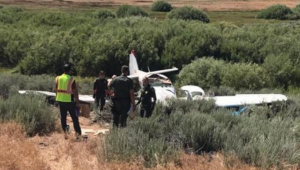By Kathryn Reed
It’s official – the voters of South Lake Tahoe will decide in November the future of vacation home rentals outside the tourist core area.
Per the city staff report on July 17, “The initiative would ban VHR rentals in residential zones following a three-year amortization period, with exception of qualified VHR rentals totaling less than 30 days per calendar year. The initiative has no effect on vacation rentals in commercial zones and the tourist core area.”
There are roughly 1,300 VHRs outside the tourist area and another 450 in the tourist area. The tourist area includes much of the area from Ski Run Boulevard to the state line. The Gondola Vista condos being built by Van Sickle Bi-State Park would be considered tourist core VHRs, as are units in the Marriott properties, and residences scattered in the neighborhoods.
While backers of the initiative are seeking to get the rentals out of neighborhoods, they have ignored the residents near the state line. Through their ballot question they are essentially allowing unlimited units to go in this area. There are many who believe that limiting the land available for VHRs will in fact impact an area with lower income people who don’t always have a voice in city politics.
The tourist area is also seen as town centers; therefore, more developed and commercial.
This approach to putting VHRs in these areas is the opposite to what Douglas County is doing. As that jurisdiction looks to revamp its ordinance, the goal is to keep VHRs in residential areas and out of town centers. This is because their definition is the buildings are residences, not commercial entities.
The South Lake Tahoe City Council on Tuesday was faced with the decision whether to put the initiative that would ban short-term rentals over the course of three years or to implement it immediately. The electeds opted to send it to the voters; with Councilman Tom Davis recusing himself because of his business.
Prior to the vote the council heard a report from Hilary Roverud of the Development Services Department about what some of the impacts of the ordinance could be. With there being so many unknowns, like what people would do with their property if a VHR is no longer an allowed use, the actual ramifications are unknown.
Roverud said it’s estimated the city will lose more than $2.4 million a year in transient occupancy tax. This is one of the three main revenue sources for the city. TOT that was going to be dedicated to recreation could be cut by more than $450,000 a year. The Tourism Improvement District, which is made up of hotels within the city, could lose about $360,000 a year. Today that money is used for marketing this area. Vacation home rental permit fee collections could drop by close to $800,000.
If the ordinance passes in November and the city were to ignore the will of the voters “the city could be faced with a writ or injunction compelling it to implement and enforce the ordinance,” according to interim City Attorney Nira Doherty. She explained to Lake Tahoe News this would be done by “a citizen lawsuit to compel the city.”
The ballot language states that if someone were to operate a VHR after Dec. 31, 2021, the city could fine the property owner up to $1,000.
What remains to be seen is if the ballot question passes is if those who use VHRs will instead choose to stay in a hotel. It’s unknown if property owners will sell, operate illegally, keep the dwelling as a second home, rent it out full time or some other scenario.
There is one theory that the VHRs will be filled with full time residents, which will fill schools. On the flip side is the belief the schools will be hurt by this initiative as will businesses tied to VHRs because there won’t be jobs.
It people want to unload the VHR because they can no longer use the house as they desire, this could detrimentally impact the housing market by flooding it. The resulting impact to the property tax, another key revenue source, is unknown.
The initiative says that after 2021VHRs will not be allowed on multi-family properties.
The staff report says, “There are currently 119 single-family residential units in the commercial zones and 371 condominiums and 37 single-family residential units in the tourist core area, a total of 527 units, which would have the ability to become VHRs if permitting requirements are met.”
Assuming voters want to ban VHRs, there is nothing to stop other people from coming back with a different ballot proposal to undo all of this – with the voters backing.


